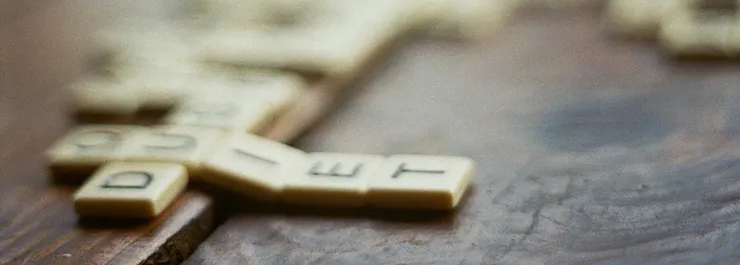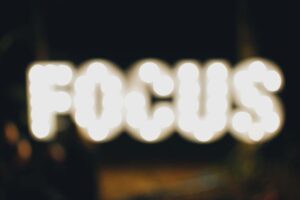As an executive coach, I spend much of my time gathering feedback from diverse sources for client leaders. I am often struck by the vast differences in perception I hear from various stakeholders.
One leader can be revered by her direct report team, operating in a highly supportive, high-accountability manner and, at the same time, receive feedback from peers and colleagues that she does not have their trust. Internal customers can report impeccable and high-value contributions to their business unit by a leader, while those above him in the organization complain that he operates with an agenda, or does not focus on (or even recognize) broader organizational needs. These leaders are “in the middle” of very different demands. The opportunity is to master the flexibility required to meet the needs of such diverse stakeholders.
The Middle Dilemma
Consider for a moment that most of us lead from the middle at times – in work, and in life. Oh, a typical middle dilemma is the literal middle manager torn between “bottoms” and “tops,” as described in Barry Oshry’s research on organizational systems. He describes the problem, in part, as a “middle’s” diminished knowledge of broad issues weakening the role of “connector.” Yet even if you’re not a middle manager, my guess is that you often find yourself caught in the middle, trying to influence some outcome important to you. In complex organizations, leading effectively is akin to influencing effectively, often without positional authority. My work is often centered around helping clients build high-trust relationships absent positional authority, in an environment fraught with politics, ego and competition. Whether your “middle dilemma” has to do with your position on the org chart or the diverse stakeholders you support, the tools for change are deeply personal.

Demonstrate Vulnerability
Do you want to know how to get what you need from the relationships you choose to form and nurture?
Know what you need. And, knowing what you need is a result of knowing who you are.
In my experience, an essential price of admission for healthy, satisfying relationships with others is a clear and grounded sense of self. I’m not talking about self-indulgence or selfishness – I’m referring to the settled sense that comes from knowing (and accepting) the uniqueness that is you. And research shows that demonstrating the vulnerability required to show up authentically is a key ingredient needed to garner trust from diverse members of an extended team.
As a coach, I utilize instruments that help me quickly (and painlessly) assess clients’ core drivers, productive behaviors and the consequences of unmet needs. While these tools are quite helpful, the fact is you don’t need a report to tell you who you are. You know when you are your best, most productive self. You know the activities and people from whom you gain energy vs. being depleted. You know what makes you feel most alive.
Do you display the vulnerability needed to let your true self be known in your day-to-day interactions with significant others? Work colleagues? Is there some aspect of your personality – some core need you have – that’s hidden away? There’s a cost to
holding back. At a minimum, when we don’t acknowledge and reveal who we are and what we need, we miss the most basic satisfaction in life. At worst, we find ourselves entangled in personal and professional relationships that can be destructive to body or psyche.

So, what is it that you need from a key relationship at work or in your life? Take responsibility by naming it, then examine what you are doing (or not) to nurture that quality. A relationship is a product of the interaction of two parts. Changing your awareness alone can shift everything. What can you do to show up as who you are?

Eliminate Judgment
I work one-on-one with people from very diverse walks of life and with quite different needs. Even with the varied backdrops, a theme keeps reappearing: judgment.
Self-judgment, judgment of others – that subtle process of forming an opinion that leads to even more subtle and often unconscious behavior directed at those we judge. Could judgment be a factor affecting the polar feedback I get from my clients’ stakeholders? I think so.
My work has always been about helping people change behaviors that are unproductive (and even destructive) in their relationships. Behaviors are tangible; they can be seen and heard. We can stop and listen to ourselves, or receive feedback from others, then make a choice to do something different and better. But if you have ever tried to act or react differently toward a situation or person that “pushes your buttons,” you know how difficult changing your own behavior can be.
Imagine one of those button-pushing people in your own life. Recall a touchy situation and then try to think of something you could have done or said differently. You may or may not be able to think of something. Even if you can, doing it is a whole different story. Right?
It’s hard to change how we act or behave because, if we really analyze it, we think our behavior is justified. This mind-trap is almost certainly being driven by a feeling. In a world where being busy is valued, rapid decision making is expected, and multi-tasking is rewarded, who has time to truly become present and feel? But that’s the key to the kingdom, so to speak. Lack of this simple presence can result in misunderstanding, or even disaster.

So take time out right now and get present. Take a breath, notice the sights and sounds around you. Recall the incident with the button-pusher. How does it feel to you? As you recall a past confrontation or presume a future interaction, what feeling do you have? What motive is driving you? Are you judging yourself or another, and if so, is it really fair and accurate? With new perspective comes transformation.
As I’ve done this work with clients (and myself), we’ve unraveled many small mysteries that have led to breakthroughs in thinking and acting. Impatience led to inclusion, inadequacy morphed into acceptance, and a motive to highlight wrongdoing was converted into motivation to solve a problem. Small and incremental, one step leads to another.
Be gentle on yourself. When we take responsibility for how we behave in connection with others, there’s a tendency for more self-judgment. True responsibility includes conscientiousness in how we regard – vs. judge – ourselves.
Self-Assessment
Here is a self-assessment, designed to determine if your past (even the past five minutes) influences your future.
- Is there something more you would do if only you had the energy, connections, confidence or skill?
- Do you feel badly because of a (non-healthy) choice you made (today or five years ago) with regard to diet, sleep or exercise?
- Are you exhausted from arguing a point, championing a cause or trying to convince those who will not be swayed?
- Do you feel inadequate because of any past injustice, trauma or difficulty?
If your answer was yes to any of these questions, some bit of self-judgment about past circumstances or choices is influencing the current situation.

Assume Positive Intent
There are so many simple and reliable tools for making relationships of all kinds easier.
One example is a simple mental model called “positive intent.” I’ve been working to assume positive intent quite a bit these days, as a way to ease the stresses and frustrations of a busy life. It’s so easy to become irritated by others’ supposed shortcomings or to take personally the minor transgressions seemingly committed on purpose to make life difficult. The principle of positive intent requires us to ask one simple question prior to judging, assuming motive for, or reacting to another person’s behavior.
“What possible, positive reason does he or she have for doing or saying that? “
It doesn’t matter what the answer is. The very moment you have an answer, no matter how preposterous it seems, something shifts. Something very big.
There’s a well-known illustration of the principle in Stephen Covey’s blockbuster title, The 7 Habits of Highly Effective People. In short, as a passenger in a crowded subway, Covey becomes irritated at a father who is not disciplining his unruly children. When he gathers the courage to ask the man to intervene, the father tells him they are all returning from the hospital where their mother (his wife) has just died. Covey experiences an instantaneous paradigm shift. Suddenly his irritation pales in comparison to the man’s grief.
The truth of positive intent is one of the toughest things for our egos to swallow. Yet once we assume there might be a reason for another’s behavior that, while perhaps misguided, to them makes some kind of sense, we are then free. Free of being violated, persecuted, or even mildly disrespected, suddenly, our thoughts and feelings are independent of the influence of others’ actions. What a break this gives us in a world in which we are bombarded by input, some welcome and some not.
We can all assume positive intent in daily interactions with everyone from strangers to casual acquaintances. The benefit is a bit less stress, a tad more peace in our hearts. Can you assume positive intent in the most challenging of your work – or personal – relationships? There lies an opportunity that just might transform those relationships. When we think differently, we act differently. When we act differently, others react in new ways. Try something new – you might find that you gain more understanding of a colleague’s behavior, and that understanding can lead to a breakthrough.
Take Responsibility
Any story we tell about difficulty in our relationships can be told in two ways.
In story one, we tell what happened; a play-by-play account of wins and losses, who did what and why —from our own point of view. The flaw with this method is just that —our own point of view! If things didn’t turn out as we wished, it’s easy to tell a story of what happened to us, what was done to us, and how unfair it all was. Story two is very different. Story two is an account we tell taking full responsibility for everything that happened. It’s a way of examining the beliefs we hold, the decisions we make and the
actions we take that lead to others’ actions or so-called fate stepping in.
Which story is most true? Even though story one is literally true, story two, the story in which we step fully into the great gift of an empowered life, is the only story worth telling.
The purpose of story two is never, ever, to create guilt, self-blame, or judgment. Story two’s true purpose is to free us to remember we are the causal force in our lives, and our choices and decisions produce our results. Sometimes life does just happen, with serious or tragic consequences. Story two gives us a chance to think or behave in a new way even after a very difficult experience. A liberating idea, don’t you think?
Leading from the middle is not easy, because influencing is not easy. You are the one who can take the first step.
Like this post? Download the PDF version















